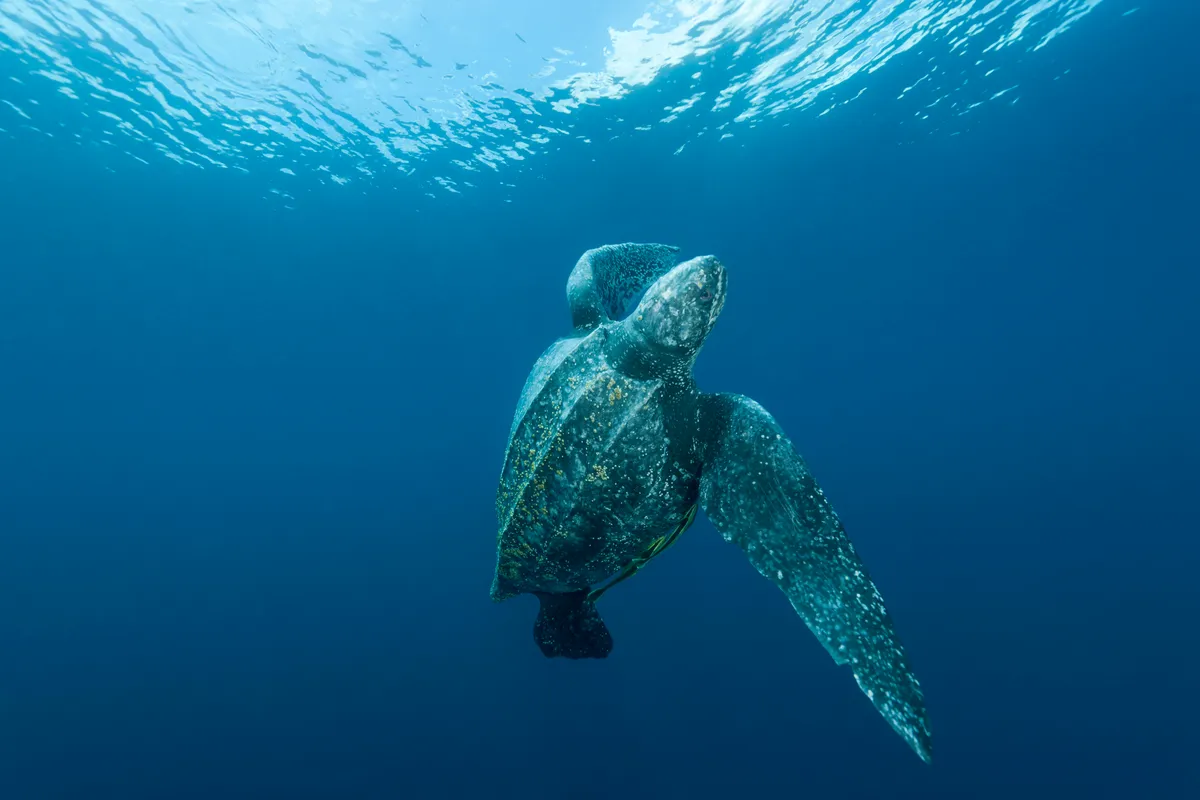An new report by the Marine Conservation Society (MCS) has revealed a 32% rise in jellyfish sightings in UK and Irish waters over the past year.
75% of the jellyfish spotted in the Wildlife Sightings report were individuals, while 11% were seen in large blooms of over 100 individuals – an increase of 57% from last year.
The most common sighting was the barrel jellyfish, which accounted for almost 27% of total sightings, followed by the lion’s mane jellyfish (17.7%).
- Can jellyfish sting even when they’re dead?
- Weirdest sea creatures – meet 11 bizarre animals of the deep
- 10 deadliest sea creatures: Meet the most dangerous animals in the ocean

The annual Wildlife Sightings report focusses on jellyfish and marine turtles (or sea turtles), which predate on jellyfish. Both marine animals are indicators of changes in water temperatures. Research has suggested that an increase in some jellyfish numbers around UK could be related to climate change, however, currently there isn’t enough evidence to make this link.
“Jellyfish populations are highly variable year on year, and depend on several environmental factors that are different each year, such as sea temperatures and storms," said Dr Peter Richardson, Head of Ocean Recovery at the MCS.
"Numbers of sightings we receive can also depend on the awareness of our sightings programme and the ‘wow factor’ of jellyfish people encounter.
“This year seems to have been a particularly good year for barrel jellyfish – one of our chunkiest jellyfish species that can occur in mind-boggling numbers when conditions are favourable. It’s only by observing trends over many years that we can start to suggest reasons for change.”

Justine Millard, Head of Volunteering and Citizen Science at the MCS, added, “The data on jellyfish and turtles that volunteers submit plays a vital role in understanding the changes occurring in our marine ecosystems, and help us to protect our seas. We urge anyone who has spotted a jellyfish or turtle to report it to us to continue to build a picture of our seas and the incredible life within them. A huge thanks to all the volunteers who have submitted data to us this past year.”
- Jellyfish guide: how they reproduce, do they have brains and why one species is biologically immortal
- 10 most venomous animals
Common UK jellyfish
The most frequently reported species during the reporting period was the barrel jellyfish, which accounted for almost 27% of total sightings (467). This is an increase of 21% compared to the previous year’s results, when it was the sixth most-spotted species. Barrel jellyfish are sometimes called ‘dustbin lid jellyfish’ due to their large size – they can grow up to one metre in diameter. They have a solid, spherical, rubbery-looking bell which can be white, pale pink, blue or yellow. Rather than tentacles, barrel jellyfish have eight thick, frilled arms.

The report features other intriguing jellyfish-like species, including crystal and comb jellies, and sea gooseberries, which made up 10% of the total sightings this year. Crystal jellyfish were the most reported 'other' species, accounting for 3.2% of all sightings.
Marine turtles in the UK
The MCS also records reports of marine turtles, which feed on jellyfish. Six of the world’s seven marine turtle species have been spotted in UK and Irish seas. There were 12 reports of marine turtle sightings this year, four of which were live leatherbacks.
Reporting sightings of these incredible creatures will support the MCS and others in understanding their movements, potential threats and how better to protect them through policies and conservation strategies. The MCS's Turtle Code provides advice on what to do if a beached turtle is found.

